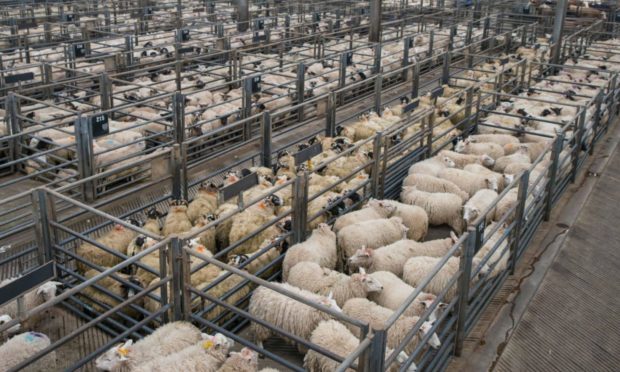Farmers and crofters are enjoying strong trade for sheep with prices for prime stock trading 20% higher than this time last year.
According to red meat levy body Quality Meat Scotland (QMS), farmgate prices for prime sheep, since the start of 2021, have been some of the highest on record.
The average price for old season lambs sold at Aberdeen and Northern Marts’ (ANM) Thainstone Centre, near Inverurie, on Thursday was 281.3p per kg. The sale topped at 350p per kg and the sale average compares to 242.8p per kg at the equivalent sale on March 12, 2020.
ANM said: “Prime hoggs maintained recent extreme rates resulting in a SQQ average of 285.5p and an overall of 281p or £125.13 per head.”
It was a similar picture at Dingwall and Highland Marts on Tuesday when old season lambs averaged 290.2p and topped at 302.3p per kg – this is up from an average of 236.9p per kg at the equivalent sale in 2020.
The average price paid for prime hoggs at United Auctions in Stirling on Thursday was 283.51p per kg – up from 236.57p per kg at the same sale in 2020 – while prime hoggs sold at Lawrie & Symington’s Forfar Mart on Wednesday topped at 340p and averaged 274p per kg, which is up from 236.2p the year before.
QMS director of economics services, Stuart Ashworth, said a combination of factors was responsible for the increased prices.
“Certainly, in the UK, slaughter data and auction market throughputs indicate a shortage of domestic supply,” said Mr Ashworth.
“January prime sheep slaughter volume in the UK was reported by Defra to have been down 18% and auction market throughputs since then continue to be lower than last year.”
He said Covid-19 disruptions at abattoirs could be responsible, in part, for the reduced throughputs, however it is more likely they are a result of a smaller lamb crop in 2020 resulting in less hoggs being carried over to 2021.
In addition, farmers may be holding back stock to market them during upcoming holiday periods when demand for lamb is strong.
“With Easter fast approaching and Ramadan beginning shortly after, these two periods of historically firm consumer demand will continue to underpin prices in the short-term,” added Mr Ashworth.
He said post-Brexit trading challenges, including the need for export health certificates and checks at ports, had resulted in reduced export activity.
Looking abroad, Mr Ashworth said some European producers were also enjoying a strong trade – the farmgate prices for prime sheep in Germany are more than 10% higher than this time last year, while prices are up 7% in France.
Irish producers are also enjoying a 20% boost in prices, however farmgate prices in Spain and Italy are both lower than a year ago, added Mr Ashworth.

